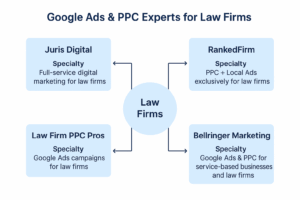Introduction: In the ever-evolving realm of digital marketing, staying ahead requires a data-driven approach. One powerful tool that marketers swear by is A/B testing. Whether you’re a seasoned professional or just dipping your toes into the vast ocean of marketing strategies, understanding what an A/B test is and how it can revolutionize your campaigns is key to success.
What is A/B Testing?
A/B testing, also known as split testing, is a method used to compare two versions of a webpage, email, or other marketing assets to determine which one performs better. The “A” and “B” refer to the two versions being tested, with one being the control (A) and the other the variation (B). The goal is to identify changes that positively impact user engagement, conversion rates, or any other key performance indicators (KPIs)
Why A/B Testing Matters:
- Optimizing User Experience: A/B testing allows marketers to understand user preferences, leading to a more tailored and user-friendly experience.
- Increasing Conversions: By identifying elements that resonate better with the audience, A/B testing helps increase conversion rates, whether the goal is sales, sign-ups, or other desired actions.
- Maximizing Marketing ROI: Fine-tuning campaigns based on A/B test results ensures that marketing budgets are allocated to strategies proven to yield the best results.
- Continuous Improvement: Marketing is a dynamic field, and what works today may not work tomorrow. A/B testing fosters a culture of continuous improvement, adapting strategies to evolving consumer behaviors.
Here are some situations where A/B testing becomes particularly crucial:
- Website Optimization: A/B testing is essential when optimizing a website for better user experience, engagement, and conversion rates. Testing different elements such as headlines, call-to-action buttons, images, and page layouts can help identify what resonates best with visitors.
- Email Marketing Campaigns: For email marketers, A/B testing is vital to refine email campaigns. Testing different subject lines, email copy, visuals, and CTAs can significantly impact open rates, click-through rates, and overall campaign success.
- Ad Copy and Creative: A/B testing is crucial in the realm of online advertising. Marketers can experiment with different ad copy, images, and headlines to understand what attracts the target audience and drives better ad performance.
- Product Pages and E-commerce: E-commerce platforms often use A/B testing to optimize product pages. Testing product descriptions, images, pricing strategies, and checkout processes can lead to increased conversions and revenue.
- Mobile App Optimization: For businesses with mobile apps, A/B testing helps enhance user experience. Testing app features, onboarding processes, and push notification strategies can contribute to better user retention and engagement.
- Landing Page Performance: When running specific marketing campaigns with dedicated landing pages, A/B testing is crucial. It allows marketers to experiment with various elements to improve landing page effectiveness and achieve campaign goals.
- Call-to-Action (CTA) Optimization: A/B testing is particularly important when refining CTAs. Small changes in button text, color, size, or placement can have a significant impact on user interactions and conversions.
- Social Media Strategies: Marketers can use A/B testing to optimize social media strategies. Testing different posting times, content types, and ad formats can help identify the most effective approach for reaching and engaging the target audience.
- Personalization Efforts: A/B testing plays a crucial role in personalization efforts. Marketers can test personalized content, recommendations, or experiences to understand what resonates best with individual users.
- Continuous Improvement: A/B testing is important as part of a broader strategy for continuous improvement. In the dynamic landscape of digital marketing, staying static can lead to missed opportunities. Regular testing ensures that marketing strategies remain effective and adapt to changing consumer behaviors
When not to A/B Test
While A/B testing is a valuable tool for optimizing various aspects of digital marketing, there are situations where it might not be the most effective or necessary:
1. Low Traffic Volume: If your website or campaign doesn’t receive enough traffic, A/B testing may not yield statistically significant results, making it challenging to draw meaningful conclusions.
2. Time Constraints: A/B testing requires time to gather sufficient data and analyze results. If you have tight deadlines and need quick decisions, other optimization methods may be more suitable.
3. Clear Winner Scenarios: In some cases, the difference between variations is so apparent that extensive testing may not be necessary. If one option is significantly superior, it might be more efficient to implement the obvious choice immediately.
4. Limited Resources: A/B testing demands resources in terms of time, tools, and manpower. If your resources are limited, focusing on high-impact strategies without extensive testing may be a pragmatic approach.
5. Irrelevant Metrics: If you are testing elements that do not directly impact your key performance indicators (KPIs) or business goals, the insights gained may not contribute meaningfully to your objectives.
6. Seasonal Variations: A/B testing results may be influenced by seasonal factors. If your business experiences significant seasonal fluctuations, consider the potential impact of these variations on your test outcomes.
7. Single Interaction Points: For certain elements with limited interactions, such as a single CTA button on a straightforward landing page, the benefits of A/B testing may be outweighed by its complexity and resource requirements.
Remember, the decision to not A/B test should be based on a thoughtful evaluation of your specific circumstances and goals.
A/B testing is a vital method in digital marketing that compares two versions (A and B) of content to determine the more effective one. It optimizes user experience, boosts conversions, maximizes ROI, and supports continuous improvement. Key areas for A/B testing include website optimization, email campaigns, ad copy, product pages, mobile apps, landing pages, call-to-action elements, social media, and personalization efforts. However, A/B testing may not be suitable in situations of low traffic, time constraints, clear winner scenarios, limited resources, irrelevant metrics, or minimal complexity. Decisions to A/B test should align with specific goals, resources, and complexity considerations.
Need Google AdWords Management? Learn more about Bellringer’s Google AdWords Management services.





